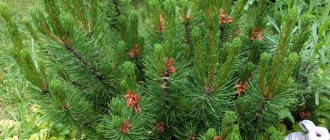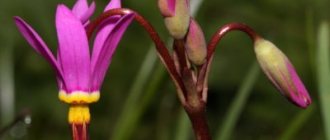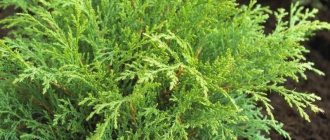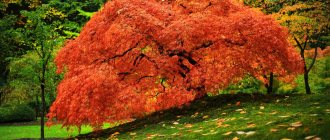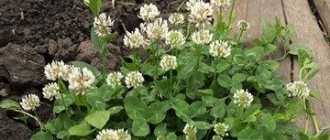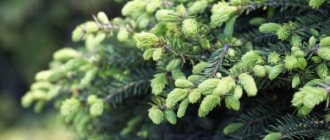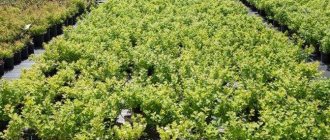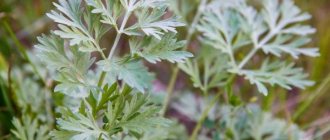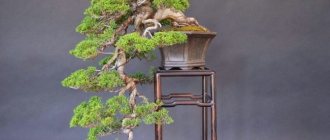Sand sedge is a perennial herbaceous medicinal plant that belongs to the genus Sedge. Since ancient times, healers have used the healing properties of the plant for a large number of diseases. And now this plant is popular among experts in traditional medicine.
Description of culture
The root system of the grass is long-creeping and has a characteristic odor. The trunk is slightly curved, triangular in shape, well pubescent, with roughness. The leaves are narrow and quite hard. The edge of the sheet is sharp and can cause a strong cut if touched carelessly, which must be taken into account when preparing raw materials.
Sedge flowers are small, herbaceous in color, arranged in an inflorescence spike. The fruit is in the form of a nut. The grass is widespread in the European part of Russia, the Northern and Atlantic parts of Europe, where it can grow in unlimited quantities. The plant prefers to grow on sandstones and soils in coniferous (usually pine) forests or along the banks of reservoirs.
Organic composition of sedge
Despite the fact that the plant is a medicinal product, classical medicine does not recognize it, and as a result, essentially no research has been carried out on its structure.
According to the results of a small number of sedge research projects, the following were identified in the composition of the herb: essential oils , saponins, coumarins, bitterness, tannins, starch, silicic acid, resins, glycosides. There can be no doubt that all of the above is far from the complete composition of this herb, due to the fact that the plant has perfectly presented itself in folk medicinal practice. If classical medicine nevertheless turns out to be interested in sedge, and the constituent plants are thoroughly studied, then the table of medicinal substances contained in it will significantly expand.
Healing properties
Sedge has long been used as a choleretic, anesthetic, diaphoretic, anti-inflammatory, emollient, expectorant, metabolism-boosting, diuretic, and general restorative.
In the vast majority of cases, these healing properties of the plant are similar to the effect of such a rather rare plant as sarsaparilla. It is not found in our region, but grows only in the tropics and is highly revered not only in folk medicine, but also in traditional medicine. As an expectorant and anti-inflammatory drug, sedge is prescribed for diseases such as pneumonia, bronchitis, whooping cough, bronchial asthma, bronchospasm, tuberculosis.
By stimulating the production of watery mucus, the plant helps to liquefy stringy, difficult to separate sputum and remove it from the body. Moreover, by eliminating inflammatory processes , the sedge plant helps to eliminate attacks of annoying cough and soon speed up the patient’s condition. Its anesthetic characteristic also turns out to be extremely useful for tuberculosis and pneumonia.
You just need to take into account that for these two diseases, sedge cannot be the main drug and should be used only as an effective addition to traditional treatment. In the case of colitis, in which flatulence and constipation are noted, sedge can also help.
It not only heals the upset intestines, but also quickly removes the two most unpleasant signs of colitis. By reducing the production of gases and improving the digestive system, the sand sedge plant can greatly improve the patient’s quality of life in a couple of days, and with methodical use, it can completely relieve any symptoms of illness. It has the ability to treat the plant and swelling that occurs for other reasons.
Diseases that sedge treats
- Vasculitis. Due to the fact that the herb exhibits a powerful anti-inflammatory effect, it can simply cope with the disease in the initial stage. In the event that only minor vessels of the skin are affected by the inflammatory process, sedge has every chance of even being a key means of therapy.
- Sedge is also effective as a plant that cleanses the blood. It can block and remove toxic compounds, bad cholesterol and, to a certain extent, heavy metals from tissues. To cleanse the entire body, herbalists recommend taking a course of sedge at least once a year.
- For neurodermatoses and psoriasis, traditional healers also recommend using medications based on this plant. They remove unwanted sensations and relieve suppuration, which makes it possible to normalize the appearance of the skin surface. In some cases, such diseases can only be treated with sedge preparations.
- Inflammation of the joints. Having a positive effect on metabolic processes in the human body, sedge grass helps to launch the self-healing process of articular cartilage, and its antiseptic and analgesic effects can improve the patient’s well-being several times over, and in the shortest possible time. Improvements are observed even when the disease is extremely advanced.
- The plant's ability to reconstruct normal metabolism can be used to correct difficulties such as excess or insufficient body weight. By normalizing the process of assimilation of certain components, sandy sedge, although not quickly, brings weight back to normal.
- It effectively strengthens the thyroid gland, enables normal functioning and protects the organ from tumors. For diseases of the kidneys and urinary system, this herb has also found its use. Thanks to it, it becomes possible to improve the urinary system without using medications.
Due to the fact that the plant promotes rapid compensation of iron deficiency in our body, it is successfully used in the treatment of anemia. Positive changes in the patient’s position can be seen after just a few days of therapy. Sand sedge is also an effective remedy for maintaining immunity.
Contraindications for use
There are not so many contraindications for treating sandy sedge, however, they are all serious and cannot be ignored. You will definitely need to stop taking this medication if the following symptoms and illnesses exist:
- allergy to sedge medicines,
- glomerulphritis,
- pyelonephritis,
- stomach ulcer,
- diarrhea.
Folk recipes
The root of the herb is mainly used for healing purposes. Medicine for diseases of the respiratory system and joints, and additionally for external use in case of damage to the skin: 30 grams of powder from the roots must be poured with 800-950 milliliters of warm water and simmered over not very high heat until the volume of the resulting decoction is equal to the estimated 500 ml.
At the end of this, removing the decoction from the heat, it must be infused, wrapped in a blanket, for about 2-2.5 hours. Then the filtered medicine is consumed orally or used to treat the affected areas of the skin. The infusion is drunk before meals , 60 milliliters four times a day for about 20-22 days.
Medicine for difficulties with the urinary system and intestines: 5 milligrams (2 tsp) are poured into 500 ml of just boiled water and, covered with a warm blanket or jacket, left to create a well-steeped infusion for 10-12 hours. Then, after expressing it, drink 120 ml before meals four times a day until the signs of the disease completely disappear.
Procurement of medicinal raw materials
The sandy sedge root is removed from the ground in late autumn or early spring before the surface part of the plant appears. Having thoroughly cleaned the shoot, it is cut into small slices and dried, laid out with a thin cover on linen in a dry and warm place where there is no access to direct sunlight. Roots are stored for storage when they become brittle.
Raw materials are stored in an airtight, tightly covered, preferably glass container. The storage period should not exceed 1 year .
Syn: sandy root, thistle grass, sandy sedge, reed grass, carus, red wheatgrass, pestle, sea grass root, silt.
A herbaceous perennial plant with narrow, sharp leaves, a creeping, long rhizome and spike-shaped inflorescences. Sand sedge root is known for its medicinal properties and is successfully used in homeopathy and cosmetology.
In medicine
Sand sedge is not a pharmacopoeial plant, but is known for its beneficial properties in folk medicine and homeopathy. For medicinal purposes, the rhizome of the plant is used, which has an analgesic, anti-inflammatory, antiseptic, diaphoretic, enveloping, choleretic, expectorant, diuretic, blood purifying and metabolism-improving effect.
The plant is successfully used for medicinal purposes in many European countries. In German folk medicine, sedge root in the form of decoctions is used in the treatment of colds (bronchitis, pleurisy and pneumonia). A decoction of sedge rhizomes is considered an effective expectorant for prolonged dry coughs. Infusions of the plant are effective for gout, rheumatism, chronic constipation and help improve digestion. In Austria and Bulgaria, sedge rhizome is used as a decoction or cold extract for diseases of the digestive system, gout, bronchitis, anemia, and pulmonary tuberculosis. In the Baltics, infusions of sandy sedge help with syphilis and dysfunction of the endocrine system.
Contraindications and side effects
Despite a number of beneficial properties, the plant has some contraindications. Sand sedge is not recommended for use for stomach ulcers, gastritis, digestive problems, diarrhea, flatulence, and colitis. Sand sedge and medicinal products from it are not recommended for use by pregnant and lactating women, children, as well as persons suffering from diseases of the excretory system, in particular acute inflammatory processes in the kidneys and bladder.
In cosmetology
Possessing many beneficial properties, sand sedge has found wide application in cosmetology. Cosmetic creams based on sedge oil are effective for whitening facial skin, getting rid of age spots and freckles. Sedge oil is included in many cosmetic products for depilation, since the active components of the plant oil stop hair growth on the skin. Sedge has antioxidant properties, actively fights age-related wrinkles and restores health and youth to aging skin as part of age skin care products. A decoction of the plant's root helps with severe hair loss and restores shine and health.
On the farm
Sand sedge is often planted to stabilize sandbanks. Sedge can be planted as an ornamental plant near ponds, in the garden, where it is given a shaded place for growth and development. In Central Asia, sand sedge is a valuable food for domestic animals.
Sand sedge (lat. Carex arenaria) is a herbaceous perennial plant, one of the species of the numerous genus Sedge (lat. Carex). Belongs to the sedge family (lat. Cyperaceae).
Sand sedge is a perennial herbaceous plant with a long (up to 8-10 m) cord-like, fragrant rhizome with easily exfoliating bark. Ground young shoots are formed on the rhizome. The stems of the plant are triangular in shape, slightly rough, densely pubescent in the upper part. The leaves are narrow-linear, hard, vaginal, rough, and have sharp edges. In May-June, small unisexual flowers appear on the shoots. They are collected in numerous (6-15), oblong-shaped spikelets. The lower, female spikelets consist of pistillate flowers, the upper male ones - of staminate flowers. The ovary is unilocular, enveloped in an oblong-ovate, brown shell in the form of a sac, which contains a thread-like column with a bipartite stigma. There are three stamens. The fruit of sedge is a nut covered with a shell.
The range of sand sedge is quite wide, covering the southern part of Northern Europe, the Baltic countries, Atlantic Europe, and the European part of Russia. Sedge is a common plant in Crimea and Ukraine. Sand sedge prefers to grow along seaside, river and lake loose sands, shores, and in pine forests near reservoirs on moist sandy soil.
Regions of distribution on the map of Russia.
For medicinal purposes, the underground part of the plant is used - the rhizomes of sandy sedge, which are harvested in early spring before the plant begins to grow, or after the plant has withered (in late autumn). The roots are cleared of soil, cut into equal pieces, approximately 10 cm long. The raw materials are dried in the shade, spread out in a thin layer on racks or at a temperature of 40°C in dryers. The rhizomes must be dried for a long period to avoid mold until the roots become brittle. Medicinal raw materials of sandy sedge can be stored in paper bags for no more than 3 years.
Saponins, coumarins, glycosides, silicic acid, resins, starch, tannins, a small percentage of essential oil, and bitterness were found in the rhizomes of sandy sedge.
Pharmacological properties
In a number of laboratory studies conducted by European scientists, special biologically active substances were identified in the rhizomes of sedge - saponins, the chemical composition of which is close to the saponins of the rhizomes of the valuable tropical plant sarsaparilla. Saponins help to liquefy sputum in the body and remove it from the bronchi; in addition, the synthesis of corticosteroids is accelerated; regulation of water-salt metabolism and activation of thyroid hormones and the immune system are also noted. Due to its medicinal properties, sand sedge exhibits antiseptic, choleretic, diuretic, diaphoretic, analgesic, anti-inflammatory, blood purifying, enveloping (emollient), expectorant effects.
Use in folk medicine
The medicinal properties of sandy sedge are known in folk medicine in Austria, Bulgaria, Germany and a number of other European countries. Infusions and decoctions of the plant's rhizomes are used for colds, severe coughs, tracheobronchitis and bronchitis, pneumonia, and pulmonary tuberculosis. Sedge decoctions are effective for diseases of the gastrointestinal tract accompanied by diarrhea, intestinal colic, flatulence, and constipation. The use of sandy sedge is advisable for gout and rheumatism. Sedge in the form of decoctions is effective for dysfunction of the endocrine system glands and bladder diseases. Baths and lotions with the addition of sedge decoction are effective for skin diseases (psoriasis, eczema, boils, lichen planus, dermatitis of various origins). Sand sedge and medicinal products from it improve blood composition and are used for anemia.
In German, Bulgarian and Austrian folk medicine, bronchitis, pleurisy, constipation, gout, and rheumatism are treated with decoctions of rhizomes. Tea made from sedge grass and roots improves digestion. Decoctions of sedge rhizomes are recommended for external use for collagenosis and lupus erythematosus. Rinse hair with sedge infusion after washing to stop severe hair loss.
Sand sedge has been known for its medicinal properties since ancient times. Zemstvo doctors recommended a decoction of sedge rhizomes for rheumatic pain, gout and syphilis. Since in the history of world medicine the roots of the South American plant sarsaparilla were considered the only remedy against syphilis, sedge rhizomes could adequately replace, according to scientific statements, an exotic plant. Therefore, sandy sedge was harvested by Russian herbalists in fairly large quantities. Since about the 50s of the 20th century, the world has seen publications by famous herbalists on the practical use of sandy sedge: N.G. Kovaleva (Moscow), S.A. Tomilin (Kyiv), N.I. Solomchenko (Donetsk), etc.
The scientific name of the genus Sedge is probably related to other Greek. κείρω - “I cut”, displays the sharp edges of the leaves of the plant with microscopic sawtooth teeth. The author of the name of the genus Sedge is Carl Linnaeus. He characterized the genus in his works “Species plantarum” (1753) and “Genera plantarum” (1754).
1. Egorova T. V. Sedge family (Cyperaceae) // Plant life. In 6 volumes. T. 6. Flowering plants / Under. ed. Takhtadzhyan A.L. - M.: Education, 1982. - 484 p.
2. Krechetovich V.I. Genus 235. Sedge - Carex // Flora of the USSR. In 30 volumes / Ch. ed. acad. V. L. Komarov; Ed. volumes B.K. Shishkin. - M.-L.: Publishing House of the USSR Academy of Sciences, 1935. - T. III. — P. 133-134.
3. Egorova T.V. Osoki (Carex L.) of Russia and neighboring states (within the former USSR). - SPb., St. Louis: St. Petersburg HCFA and Missouri Botanical Garden, 1999. - 772 p.
4. Egorova T.V. The sedge family (Cyperaceae) // Plant life. In 6 volumes. T. 6. Flowering plants / Under. ed. Takhtadzhyan A.L. - M.: Education, 1982. - 484 p.
5. Antimicrobial substances of higher plants” / ed. V.G. Drobotko and others, - Kyiv, 1958. - 346 p.
Good to know
Author:
Author:
see also
You watched
Return to list
The coasts of water bodies are inhabited by moisture-loving plants. These include sedge. In appearance, it is somewhat reminiscent of cereals - it has the same long leaves and inflorescences on fragile stems. But cereals are not hollow from the inside, and also have a triangular stem shape. In cereals it is cylindrical. Today, a large number of sedge species have been discovered.
Plant classification
Sedge is a herb whose beneficial properties are used in folk medicine and homeopathy. Rhizomes are especially valuable in this regard. They remove inflammation, relieve pain and kill pathogenic microbes.
In total, two large categories of plants can be distinguished. The first is hummock-forming varieties. Their root system is short. Sedge is a plant that forms clear, dense tussocks. There are types of sedge:
- high;
- fox;
- turfy;
- drooping;
- cribriform;
- I'm milling.
Sedge is a plant that can reach a meter in height. Its ears stick out in different directions and have an impressive length. The species is divided into two subspecies with yellow leaves edged with green stripes and characterized by small stature.
Turf grass, which is easy to cut, forms tall, oval-shaped tussocks. The leaves are narrow and dark green. The inflorescences are small, low, barely noticeable. The foliage is light green, distinguished by closely spaced spikelets, where male and female buds are mixed with each other. The flowers are large.
The drooping variety can reach a meter in height. The leaves are pure green and wide. The culture produces brown ears. The sieve-like plant has spikelets that hang slightly to the ground, greenish with a yellow tint, and quite large. They are collected in a bun.
The millet variety has a blue tint, is small in height, not exceeding 40 cm, and has an elegant shape. It is decorated with small decorative spikelets that sit on small peduncles.
The second type of sedge is the spreading species.
Spreading sedge species
These are separate species with long rhizomes. They are more difficult to handle as they require constant care. There are types:
- coastal;
- aquatic;
- pointed;
- nosed;
- bubbly;
- spicy;
- black.
Coastal sedge is represented by the species Variegata. It has white longitudinal stripes on its leaves. There is a variety of Aurea. Its leaves are yellow. Aquatic sedge has a nondescript appearance. The shade of its leaves is grayish with a slight green tint. The pointed appearance has leaves with a blue and greenish tint. In general, the appearance is quite faded and discreet.
An aquatic plant can be characterized in much the same way. The vesicular variety has female inflorescences in the form of sacs, which are distinguished by a yellowish tint. They sit on large ears of corn. Black sedge has tall inflorescences. Due to the dark scales, it seems as if the ears are dark. The foliage has a bluish color.
Sharp sedge
The acute variety is widespread in Central Asia, Siberia and Europe. It can be found on muddy and sandy shores of reservoirs. It lives mainly in the taiga zone. Its rhizomes are creeping. The roots do not have the yellow felt characteristic of this plant. The bases have vaginas of a reddish and brown hue.
The leaves are slightly gray, flat, and reach a width of 2 to 6 mm. Their length coincides with the length of the stem. The latter have a triangular shape, slightly rough at the top, and grow up to 100 cm in height. The pistil spikelets are cylindrical, sessile.
The leaves and stem may be rough, and therefore there is a risk of cutting yourself if you accidentally touch them. The skin of the leaf is impregnated with silica. It is its smallest components that provide the cutting properties of the plant. Inflorescences are spikelets that sit on long stalks. Creeping rhizomes allow the crop to grow. This type of sedge grows well directly in water.
Water view
Many sedges like moist areas. But this particular species is capable of growing directly in water. It reaches a height of more than a meter and has a triangular peduncle. There are from 4 to 6 spikelets on the stem. Flowering begins around May. The stem has a smooth structure. The aquatic species can be found over vast areas, including in the north.
Another type, net-shaped sedge, on the contrary, settles on muddy or sandy shores. Prefers lakes and rivers, temperate zones of Central Europe and taiga. She settles in swamps and damp meadows. It can be seen in the Far East, Kazakhstan and Siberia, the European part of Russia.
The plant varies from 5 to 30 cm in height and forms a dense turf. The leaf width ranges from 2 to 3 mm. The inflorescence is quite dense, capitate. It reaches 2 cm in diameter and has a wrinkled surface due to its rather long pouch-like spouts. At the base it has several colored leaves, which are much larger than the bud itself. It is better to place it on a damp sandy area.
Capricorn and winged
The first variety is typical for the Far East, the Korean Peninsula and Japan. Where does Capricorn sedge grow:
- subtropics:
- zones with moderate heat levels.
Plants reach from 30 to 70 cm in height, densely turfy. The length of the leaves ranges from 6 to 12 mm. They are pointed, longer than the stem.
The ears are short, cylindrical or oblong. They are located on short legs. The sacs, which represent female buds, look like an awl. Their teeth are arched and slightly bent. In some ways they resemble goat horns, hence the name. Budding begins in late spring. The fruits are formed in July.
Winged sedge was first discovered in Europe. It still grows there today. The plant also settles in the countries of North Africa and the Caucasus. This species loves slightly flooded meadows, lake shores and oxbow lakes. It is a perennial that can reach a height of 60 cm. It forms bunches of shoots in the shape of an arc or erect. Plants have thin and hard leaves. Golden forms of the culture are distinguished. They are quite rare, but are used as garden aquatic plants. The Aura species just has a yellow border.
Gray's sedge and cottonmouth
Gray's sedge grows on the shores of North America. The height of the cereal crop varies from 30 to 60 cm. The leaves are yellowish with a green tint, resemble a trough, and are narrow. They are directed vertically and have a rigid structure. The fruits are so unusual that they gave the culture the name morning star.
The seed sacs are up to 1.5 cm long and large. They form spherical stars with a beautiful appearance. The foliage is erect and deep green. Flowering continues from June to August. The plant remains green almost until November. It feels good in damp areas and along the banks of water bodies. At the same time, sedge can grow on soils exposed to bright sun and in dry places.
It is better to place it one by one, when arranging borders. It is also a good idea to plant the plant along the banks of reservoirs. When cut, it is suitable for arranging, including as a dried flower.
Sitnichek loves damp, swampy areas of the taiga and tundra. The plant forms numerous thin shoots. The leaf width is from 1 to 2 mm. The inflorescences are quite impressive in size, consisting of three cylindrical spikelets.
Large-headed and palm-leaved
Big-headed sedge grows in the coastal zone. It can also be found in the western regions of the North American continent. The plant is dioecious, has a creeping root, reaches a height of 5 cm. The stems are slightly thick, triangular. The leaves are leathery and longer than the stems. The inflorescences are pistillate, large, and book-shaped. Mature sacs are noticeably splayed to the sides. The species can be cultivated on sandy soil. It is desirable that it be salty and raw.
The palm-leaved variety grows in wet meadows and lowland forests. The perennial has erect shoots and tufted foliage. In some ways it resembles papyrus. He looks very exotic. The foliage sits on a rather weak stem.
The leaves are narrow and pointed. If you look at the appearance of the plant, it becomes clear why it was called palm-shaped. Its root system is spreading a little.
Flowers are formed in June or mid-summer. The species is distinguished by the typical shade of both foliage and flowers. With the onset of the cold season, the species retains its green tint until mid-January. At the beginning of March, the leaves are removed. This is explained by the fact that sedge grows quite early and is classified as a cold-growing species. It can grow in moist soil or in the shade, but is also tolerant of sunlight. It can be propagated by division.
Parvskaya, or short-columnar
It is a perennial with amber rhizomes. It has numerous roots and a flattened stem. There is a gutter in the central part. The flowers are collected in spikelets at the ends of the stem. The fruit is formed - a dry nut. The grass has become widespread in Transnistria and the Kyiv region. It is found in Southern Transcaucasia.
The grass loves well-lit forests and meadows and can reach subalpine latitudes. It forms dense thickets.
The leaves of this plant are used as medicinal raw materials. They are assembled in early and mid-summer. The crop is cut with a knife at a height of 7 cm from the soil surface, after which any impurities are removed by placing it in baskets or canvas bags. Dry it in the open air, spreading it in a layer of 5 cm and turning it over regularly. In rainy weather, plant material is moved under a canopy. You can also keep it in the attic where there is good air circulation.
The leaves are rich in alkaloids. Brevicollin is the most valuable of these. He:
- activates labor;
- helps prevent postpartum hemorrhage;
- relaxes peripheral blood vessels;
- enhances intestinal motility.
It is prescribed for pneumonia and hypertension. To prepare the medicinal composition, pour 10 g of herb into a glass of hot water. Bring to a boil in a steam bath and hold for 15 minutes, then remove and leave for 45 minutes. Strain with gauze in several layers and increase the volume to the original volume. Take 3 times a day before meals, 2 tablespoons.
Recommendations for cultivation and care
Sedge spreads rapidly when planted in open ground. Placing it in containers can restrain its growth. All varieties that form hummocks can be planted directly into the ground. Herbs can tolerate light shade. On the other hand, the reed and coastal varieties do not do well in such conditions.
Almost all of the listed species will grow excellently on marshy shores. You can even provide them with a immersion of 10 cm. The growth of crops must be controlled. Sedges need constant monitoring. With the onset of spring, it makes sense to think about cutting dry leaves. Grasses reproduce by division. Varieties with long rhizomes can be propagated throughout the season. For those that form hummocks, it is advisable to do this in the spring.
As for the application, sedge is used to decorate streams and various reservoirs. Species with unusual leaf shades will attract attention in large clumps. Various types create original color effects, which make sense to use for decorative purposes.
- Author: admin
Rate this article:
(0 votes, average: 0 out of 5)
Sedge is a herbaceous plant that is characteristic of the Northern and Atlantic parts of Europe. There are about one and a half thousand varieties of this plant. The grass prefers moist soils, and is more often found on lake and river sands, in pine forests, and in coastal heaths. But some species can exist in steppes, deserts, and even in the Arctic.
Chemical composition of sand sedge
Unfortunately, despite the fact that the plant is medicinal, traditional medicine does not recognize it, and therefore practically no research has been carried out on its composition. Based on the results of a few studies of sandy sedge, the following were found in the plant: saponins, essential oil, bitterness, coumarins, silicic acid, tannins, glycosides, resins and starch. There can be no doubt that this is not the complete composition of the plant, since the herb has shown itself well in folk medicine. If classical medicine still becomes interested in sandy sedge, the composition of the plant will be fully studied and the list of medicinal substances in it, of course, will expand significantly.
Sedge grass in a pot
Some varieties are not frost-resistant, so they are recommended to be grown indoors. To do this, plants are planted in pots and left to overwinter in a warm place. With the arrival of spring, they can be taken outside, using them as decoration and landscaping in the garden area. You can simply plant it in pots, because sedge grass looks very impressive in flowerpots, especially if you use decorative varieties with long stems.
What does sandy sedge help with?
Since ancient times, healers have used the medicinal properties of the plant for a variety of ailments. They prescribe sandy sedge to their patients as a diaphoretic, choleretic, analgesic, anti-inflammatory, emollient, expectorant, metabolism-boosting, diuretic and tonic. In many ways, these medicinal properties of the plant are similar to the effects of the sarsaparilla plant, which grows in the tropics and is highly valued in folk and traditional medicine.
As an expectorant and anti-inflammatory medicine, sedge is prescribed for bronchitis, pneumonia, bronchial asthma, whooping cough, tuberculosis and bronchospasm. By activating the production of liquid mucus, the plant helps to liquefy viscous, poorly separated mucus and remove it. In addition, by eliminating inflammatory processes, the herb allows you to relieve attacks of hysterical cough and quickly improve the patient’s condition. The analgesic property of sand sedge is also very useful for pneumonia and tuberculosis. You just need to take into account that for these two diseases, sedge cannot be the main medicine and should be used only as an effective addition to traditional therapy.
In case of colitis, in which constipation and flatulence are observed, sandy sedge will also help. It not only treats diseased intestines, but also relieves two of the most unpleasant symptoms of colitis as quickly as possible. By improving digestion and reducing the production of gases, sandy sedge can significantly improve the patient’s condition in a few days, and with consistent use, completely eliminate any manifestations of the disease. The plant can also treat flatulence that occurs for other reasons.
Vasculitis is another indication for treatment with sedge. Due to the fact that the herb has a strong anti-inflammatory effect, it can easily cope with the disease in the initial stage. In the event that only small vessels of the skin are affected by inflammation, sandy sedge can even become the main treatment.
Sandy sedge is also effective as a blood purifying plant. It is able to bind and remove toxic substances, bad cholesterol and, to some extent, heavy metals from the body. To cleanse the body, herbalists advise taking a course of sedge once a year.
In the case of neurodermatoses and psoriasis, herbalists also advise the use of plant-based preparations. They will eliminate discomfort and relieve inflammation, which will improve the appearance of the skin. In some cases, these diseases can only be treated with sedge products.
Joint inflammation is also a reason to think about medicinal herbs. Having a positive effect on metabolic processes in the body, sand sedge helps to launch the process of self-healing of articular cartilage; and its anti-inflammatory and analgesic effects can significantly improve the patient’s condition in a minimal period of time. Improvements are observed even when the disease is very advanced.
The plant's ability to restore healthy metabolism can be used to treat problems such as being overweight or underweight. By normalizing the processes of assimilation of certain substances, sandy sedge, although not quickly, returns weight to normal.
The herb also has a positive effect on the thyroid gland. It effectively strengthens it, helps normal functioning and protects the organ from tumors.
For diseases of the kidneys and urinary system, sandy sedge has also found its use. In case of cystitis, inflammation of the ureters and the formation of sand in the kidneys, the grass will be simply irreplaceable. Thanks to it, you can improve the urinary system without resorting to medications.
Due to the fact that the plant helps to quickly replenish iron deficiency in the body, it is successfully used in the treatment of anemia. Positive changes in the patient’s condition can be seen after just a few days of treatment.
Sand sedge is also an effective remedy for strengthening the immune system. Many healers compare its effect with the effect on the immune system of the popular echinacea.
Types of decorative sedge
Decorative sedge for the garden can be high or low. Thanks to this, it can be used for planting on a personal plot as a background for bright flowers, to frame a small garden pond or to decorate a gazebo. The most popular plant varieties:
- Palm sedge (C.muskingumensis). Reaches a height of 70-80 cm. There are 2 types - Silberstreif and Oehme.
Sedge palmifolia
The first is characterized by the presence of bright green leaves, streaked with white stripes. The second option is distinguished by its variegated color, the color of the leaves is fawn, framed by a yellow stripe. - Clove (Carex beatles). Included in the group of low-growing varieties. The maximum height does not exceed 15-20 cm.
Clove sedge
The leaves are collected in a round bud, which diverges 30-40 cm around the circumference. They remain green throughout the whole year. - Japanese sedge (C.morrowii). Perennial dense bush plant, up to 30-40 cm in diameter. Unpretentious in care, easily adapts to environmental conditions.
Japanese sedge
It is distinguished by a large number of dense leaves that have a sword-like shape. The color is green with a creamy white stripe along the edge of the leaf. It grows quickly, completely covering the soil.
Contraindications to treatment with sandy sedge
There are not very many contraindications for the treatment of sandy sedge, but they are serious and cannot be neglected. You will definitely have to give up this medicinal plant if you have:
- pyelonephritis;
- glomerulonephritis;
- diarrhea;
- stomach ulcer;
- allergic reaction to sand sedge medications.
In addition, mandatory consultation with a doctor requires the use of sandy sedge for internal use in pregnant women, nursing mothers, children under 3 years of age and elderly people over 80 years of age.
Sedge-like grass
Among the plants that externally resemble sedge (depending on the variety) are:
- wheatgrass;
- fescue;
- foxtail;
- meadow grass;
- Selsleria;
- flyaris - grass like sedge with white stripes;
- ryegrass
Medicines from sand sedge
As a rule, the root of the plant is used for medicinal purposes.
Medicine for diseases of the respiratory system and joints, as well as for external use for skin diseases
30 grams of crushed plant roots are poured with 800 milliliters of water and boiled over low heat until the volume of the medicine is approximately 500 milliliters. After this, after removing the drug from the heat, it is infused, covered with a blanket, for 120 minutes. Next, the strained product is drunk or used to wipe the affected areas of the skin. The drug is taken orally before meals, 60 milliliters 4 times a day for 20 days.
Medicine for problems with the intestines and urinary system
2 small (teaspoons) of the plant are poured with 500 milliliters of just boiled water and, having been insulated, left to infuse for 10 hours. Next, after filtering the medicine, drink 120 milliliters before meals 4 times a day until the symptoms of the disease completely disappear.
Recommendations for cultivation and care
Sedge spreads rapidly when planted in open ground. Placing it in containers can restrain its growth. All varieties that form hummocks can be planted directly into the ground. Herbs can tolerate light shade. On the other hand, the reed and coastal varieties do not do well in such conditions.
Almost all of the listed species will grow excellently on marshy shores. You can even provide them with a immersion of 10 cm. The growth of crops must be controlled. Sedges need constant monitoring. With the onset of spring, it makes sense to think about cutting dry leaves. Grasses reproduce by division. Varieties with long rhizomes can be propagated throughout the season. For those that form hummocks, it is advisable to do this in the spring.
As for the application, sedge is used to decorate streams and various reservoirs. Species with unusual leaf shades will attract attention in large clumps. Various types create original color effects, which make sense to use for decorative purposes.
Preparation of medicinal raw materials
The root of sandy sedge is dug up in late autumn or early spring until the above-ground part of the plant appears. Having cleaned the rhizome well, cut it into small pieces and dry it, spreading it in a thin layer on a linen in a warm, dry room where direct sunlight does not reach. The roots are removed for storage when they become brittle. The raw materials are kept in a hermetically sealed glass container for no more than 24 months. The optimal period for consuming harvested raw materials is a period of 18 months, since later the healing properties of the plant begin to gradually decrease.
Sedge grass in landscape design
This plant has long been chosen by landscape designers due to its decorativeness and unpretentiousness. There are many options for using it to decorate a site.
- Mostly it is planted next to artificial reservoirs, because against the background of water, tall marsh sedge grass looks harmonious and impressive.
- It is often used both in individual plantings and in compositions. Sedge goes well with all plants, emphasizing their individuality without losing its own.
- The plant looks great in alpine hills next to the stones. You can plant tall varieties in the center of the composition, and low-growing varieties along the edges. Such a slide will look very stylish even without flowering plants.
- The plant is often used to decorate the trunk space under trees. Here the sedge grass has no competition, because it thrives in the shade, which is not typical for many plants.
- You can decorate garden paths with sedge by planting it along them.
- Alternatively, the plant is used in cases where bald spots need to be covered. Ground cover varieties are ideal for this.
Types and varieties, variegated, bronze, palm-leaved, blue, Amazon mists
Let's look at the most common and popular varieties.
Variegated
The leaves are attractive, have longitudinal stripes of different colors - greenish, cream or white. The height of variegated sedge is from 90 to 120 centimeters.
This species loves plenty of sun, but can also grow in a shaded place. It is a drought-resistant variety that does not require frequent watering. It tolerates winter frosts without problems. You can trim this look to a height of 20 centimeters.
Bronze
The leaves are evergreen, hairy, and a large mass of leaves that have a bronze tint grows from the ground. When the plant is just growing, the leaves are narrow, stand straight, and their tips point upward.
When the sedge matures, the leaves bend beautifully, the tips tend to the ground. In any sunny area, the color variations of these plants will be a real decoration.
The bronze species grows to a maximum of 50-60 centimeters in height, making it suitable for growing in large pots or other containers that can be brought indoors for the winter.
Goes well with bulbous flowers and other perennial types of ornamental plants. Bronze sedge loves a lot of sun, but can grow in some shade.
Palmolia
This type of perennial has erect foliage, with tufts at the ends of the leaves. The leaves are a light green shade and the palm-leaf appearance looks great when planted in large groups.
The grass remains decorative until October. If you water this sedge well, it can grow even in open sun.
Suitable for planting in shallow ponds, maximum 10 centimeters. Tolerates winter frosts well and does not require additional shelter.
Let's watch the video and find out what decorative sedge looks like in landscape design, in particular, we will talk about palmate sedge:
Blue
This perennial species grows up to 70 centimeters in height.
The foliage is hard and thin, has a blue tint, grows in bunches upward, and almost does not bend towards the ground. This sedge produces spikelets located on high stalks.
These bushes are unpretentious in care, are drought-resistant and tolerate frost without problems. This species requires frequent weeding and reproduces quickly using root layering.
Amazon mists
These lush bushes are perennial, growing a maximum of 30 centimeters in height.
The leaves are slightly curled, silvery on top and green underneath. The bushes love sunny areas, there is no need to specially select the soil, they can grow in both wetlands and dry places.
How to choose a place?
In order to avoid problems with the plant, it is necessary to create conditions for it that are close to those when growing in its historical homeland.
Thus, steppe and semi-desert species should not be planted in swamp soil, and aquatic species should not be planted in sunny conditions (there are clear instructions on this on the seed packet).
Sedge plants should not be planted next to gooseberry and currant bushes - they are food for fungi from the genus Anthracoidea (smuts), as well as intermediate hosts of goblet rust, from which spores are transferred to the said fruit bushes in the spring.
You should not thoughtlessly spread “cute” species throughout the area - among them there are aggressively occupying areas not intended for them. We are talking about blue sedge (C. glauca), capable of growing on the most “ungrateful” soils (dry and poor), characterized by extreme frost resistance (withstands temperatures down to -40°C). When growth is controlled, it is an excellent ground cover crop - an ideal neighbor for feather grass and various eremurus.
C. glauca
Conversely, the Brown Form and Bronze Form varieties are unusually demanding on the composition of the soil - it must be moderately moist and well-drained (without the threat of drying out or getting wet), with a pH level close to 7, their orientation is sun, in the worst case - partial shade .
If there are no suitable soil conditions for the species you like, they can be created by planting the plants in containers or other containers with soil created by mixing in the proper proportions.
Planting sedge seedlings and seeds
Planting begins when the spring soil warms up sufficiently. Preliminary deep digging is carried out for the free development of roots. After this, longitudinal grooves are made in the ground, the depth of which will directly depend on the variety and size of the seedlings. For planting seeds, the furrows must be very shallow. After moistening the grooves (or holes), they are sprinkled with a thin layer of sand, which can be mixed with peat. After this, planting is carried out, followed by light compaction and light moistening of the top layer.
Propagation by seedlings
You can also practice the seedling method of planting seeds, which is best started in February. The seeds are sown in a spacious, wide container in a sand-peat soil mixture with the addition of turf soil and humus. It is very advisable to add a little crushed coal to the soil so that it “breathes” well.
Seeds require preliminary 12-hour soaking in chilled boiled water. It is advisable to change the water every 2 hours. For swamp varieties, the soaking time is doubled. The finished planting material is laid out on the surface of the substrate, after which it is sprinkled with a thin layer of the same composition or calcined river sand. The container is covered on top with a transparent material (glass, film), which should be located above the ground without touching it, and placed in a warm place, for example, on a heating radiator, if it is not too hot. Bottom heating of the soil will be optimal for seeds. Humidity must be maintained at a constant level. You will have to wait at least a month for the first shoots, and sometimes two.
To prevent the seeds from starting to rot under the film, it must be removed daily for 1-2 hours.
As soon as the sedge grass begins to grow and looks like a small copy of an adult shoot, it is necessary to pick it and simultaneously transplant it into another container. The plants will be ready for planting in a permanent location by May.
Reproduction of sedge by dividing the bush
This is the fastest and easiest propagation method, provided that adult bushes of the desired variety are available. They need to be dug up in the spring, at the beginning of their active seasonal growth. The root “cushion” is freed from the ground, inspected for possible rot, and the central root is cut into pieces with a sharp knife, after which the upper part of the plant is carefully torn apart by hand. You shouldn’t chop the clump too much; small root divisions may not take root. The cut areas are sprinkled with coal dust to prevent their subsequent rotting (you can use crushed tablets of regular activated carbon). After division, it is recommended to plant the cuttings in temporary containers for 10 days, providing them with shade and abundant watering during this time. After this, they can be transferred to a permanent place in the garden bed. In the first year of planting, you should not expect vigorous growth of seedlings or seedlings; usually the first season is spent on adaptation and rooting. Full results can only be expected next year.
Sedge looks very beautiful framed by garden paths, but you should take into account the rigidity of its leaves so that, as they grow, they do not scratch people passing by.
It should be remembered that ornamental domestic sedge is aggressive in the same way as its wild-growing fellow weeds, so it is necessary to take measures in advance to physically limit the spread of the root system by installing underground barriers.
Sedge care
The maintenance of sedge on the site comes down to ordinary simple gardening agricultural technology, but with the obligatory consideration of the characteristics of each of its types.
Watering
Absolutely all varieties of crops love moist conditions, with the only difference being that for some of them regular, abundant watering is sufficient, while others must constantly grow in a wetland. It is unacceptable for the soil to dry out to the point of surface crusting and cracking. Even if this does not destroy the sedge, it will spoil its decorative appearance - the leaves will begin to turn yellow at the tips, their growth will stop, and the root system will weaken.
An indoor sedge flower or a specimen growing in a container can be placed in water directly with a flower pot. The most difficult thing is to prevent plants in hanging pots from drying out; they need to be watered daily in the summer heat.
Ornamental sedge species are extremely sensitive to the quality of water for irrigation, in particular its hardness. Household tap water should sit for several hours, while industrial water, which is usually supplied through pipes for watering a dacha, must be left in a barrel for several days so that all chemical compounds settle to the bottom. Otherwise, you can destroy the roots.
Top dressing
The culture is responsive to the addition of organic matter - bird droppings or mature manure. A good result is obtained by monthly fertilization with mineral compounds, which should not have a preponderance in the direction of nitrogen. We can also recommend alternating application of Nitroammofoska with a balanced composition of Ammophos. Starting in August, feeding is stopped.
Trimming
It is permissible to shape the sedge planting, but this must be done competently and with a skillful hand, without making multiple cuts. Trimming sedge requires a certain skill so that only the part being removed is subject to deformation under the pruning shears. Removing last year's dry leaves, including those of evergreen species, is a mandatory spring procedure. It is not recommended to trim the above-ground cap in the fall, otherwise it will be much more difficult for the plant to overwinter.
Botanical features
Numerous ornamental garden varieties and orbicularis (a weed that is difficult to remove from gardens and lawns) - all these herbaceous plants belong to the genus Cyperus, which is part of the Cyperaceae family. Modern scientists include more than 500 plant species in the genus Cyperus. Almost all sedge is a perennial grass, but there are also species that in the first year not only grow leaves, but also bloom and even bear fruit. This herbaceous plant has a creeping horizontal rhizome. An exception is the sedge Elata, whose rhizome develops vertically to support the plant and develop in the sand dunes.
